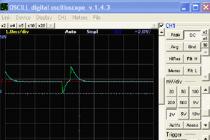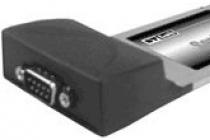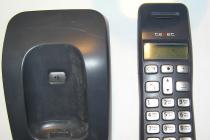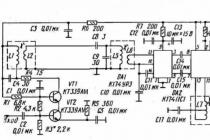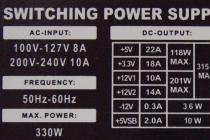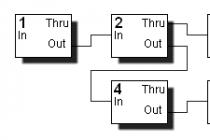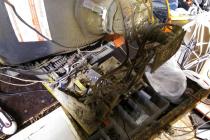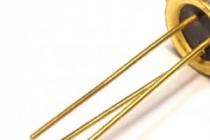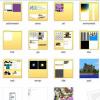Do you feel "Need for Speed"? You've probably seen cool photos of a certain dynamic action being shown forever frozen in time and wanted to learn how to do it yourself. Maybe you want to try "photomagic" and make things freeze in the air? Let me show you how it's done.
Canon 50D with 50mm f/1.8 Canon lens - 1/2000s, f/6.3, ISO 400. Daylight only - flash off.
The longer you've been into photography, the more you'll appreciate the camera's ability to do magic. One of the special functions of our "magic boxes" is the ability to stop time. I like the expression of the artist John Berger: "Photography seems like a strange invention, because its main working materials are light and time."
When you press the shutter button, you are literally using light to capture a moment in time that didn't exist before and won't exist after. The days go by, but the frozen moment remains, and the shorter the shutter speed, the thinner this fragment of time.
High-speed shooting - what is it?
For the purposes of this article, we will define high-speed photography as the ability to adjust the shutter speed of a photograph so that all movement is frozen and the viewer can see what is impossible to see with the naked eye. There are two main ways to do this: the first is to reduce the shutter speed, the second is to use the flash with the minimum duration. The common denominator of these two methods is a very short exposure time. But how small should it be? As with most areas of photography, this is a relative term.
Shooting in daylight
When you use only natural light, for example, outdoors on a sunny day, it is logical that the first method is already applied. You probably know that in order for a moving subject in a photo not to move, you need to use a fast shutter speed. How about more specifically? If you want to completely freeze the subject, the shutter speed must be fast enough so that there is no distinct movement during the exposure.
The required shutter speed depends on the speed of the subject's movement. The direction of movement relative to the camera (towards or away from the photographer, diagonally or perpendicularly) also plays a role. Do not forget about the distance to the subject and the power of the zoom.

To work with very fast objects (for example, a flying bullet), a xenon flash is unlikely to give the desired result. A so-called short-pulse flash (air-gap flash) can provide a shutter speed of 1/1,000,000 second instead of the standard 1/35,000. Air is used as a replacement for xenon, and instead of 100 volts of voltage, deadly 30 thousand volts are used. If you do this, you will undoubtedly cross the line of a beginner and move to a new level.
It is clear that such high-speed photography is not available not only to a simple layman, but also to many professionals, since simple cameras are not designed for this. But nevertheless, there are a lot of pictures from the “stop a moment” series. Let's put aside high-speed cameras for scientific experiments.
What does it take to get a super high-speed shot? There are 3 components:
- Very short exposure. From 1/6000 and above
- Good lighting
- The shutter should work at the right moment.
On closer inspection, this is not realistic. Top-class DSLRs give out a maximum of 1/8000 and cost a lot of money. A light source that allows you to shoot at such shutter speeds will burn our eyes to the back of the skull. We will not reach the right moment. :)
But there is a solution. Unfortunately, there are very few articles on the Internet on how to take a high-speed photograph at home. In Russian even less. In fact, the only thing that could be found in Russian is an article by Evgeny Orlov on the Hooligan Element website, but it suffers from the heavy legacy of a full-fledged academic education :). The author strongly deviates into the scientific experimental area, moving towards the creation of self-made flashes.
In fact, everything is more prosaic.

And another way to shoot "water macro" is described in another article Quick guide to Simple High Speed \u200b\u200bMacro Photography. It is somewhat simpler and different from the previous two, but its scope is more limited.
In conclusion, to boost morale, a selection of high-speed photos from SmashingMagazine


















Long exposure photography is often associated with fine art photography because it allows photographers to achieve surreal and ethereal effects, often from rather banal phenomena. Most cameras aren't specifically designed for long exposure photography, but you can get great results with just about any camera with the right exposure and focus.
 A 16mm wide-angle lens on a full-frame DSLR used f/10 for adequate depth of field. Exposure time 13 sec. ISO 800 value.
A 16mm wide-angle lens on a full-frame DSLR used f/10 for adequate depth of field. Exposure time 13 sec. ISO 800 value. The tripod helped make this 13 second exposure. Long-term exposure blurs all water movements, giving a creamy look to the water surface. City lighting adds a warm tone that matches the colors of the fireworks. Mounting the camera on a tripod allows you to use much slower shutter speeds than is possible with handheld photography, even if the lens and body are stabilized.
Another great benefit that a tripod gives you is the ability to set your camera's shutter speed to over a minute (preferably at least 30 seconds or longer).
Camera Requirements for Long Exposure Photography
Long exposure shooting doesn't require any special lenses, and it doesn't matter if your camera has the ability to mount interchangeable lenses. The two most important requirements are the ability to shoot at shutter speeds longer than one minute and the ability to shutter without camera shake (remote shutter release, self-timer shooting).
Most cameras are equipped with self-timers that delay the start of exposure by two, five, or 10 seconds, allowing the camera to stabilize before the shutter opens. The longer the delay, the more likely the camera is stable.
An alternative is remote control, which can be either wireless or wired. Wireless remotes are preferred as they don't have physical contact with the camera while the cable can snap. A blocking remote is needed for very long exposures. You can also use a smartphone with special software for remote shutter release if your camera has wi-fi.
It is better if the camera supports shutter speeds B (Bulb) and, or, T (Time).
B (bulb) Bulb exposure or manual exposure - a mode of operation of the camera shutter, in which the frame window opens when the shutter button is pressed, and closes when it is released. In this case, the shutter speed is set manually. In modern equipment, it is denoted by the Latin letter "B".
Traditionally, the B setting keeps the shutter open when the shutter (or remote) button is held down, while the T setting opens the shutter on the first press of the shutter button and closes on the second press.
However, many camera manufacturers make changes to exposure controls. Some limit the exposure length for Bulb or Time, often limiting the exposure to less than 30 minutes, which is not ideal for astrophotography, for example. Check your camera's manual for all the features.
Many different phenomena can be photographed with long exposures; you need to decide whether you want to capture the moving subject itself in sharp focus or blur and blur the movement. If it's the first option, you'll be looking for interesting lighting. The second case is manifested in blurry effects.

Photo of tourists around the campfire. This 10 second exposure at ISO 400, taken with a small sensor digital camera, shows some blurring caused by subject movement, as well as traces of image noise.
Popular long exposure scenes containing motion include astrophotography and light trails from passing traffic, blurry clouds or swaying grass in landscapes and blurry waves in seascapes, photographs of streams or rivers, or created ethereal effects with waterfalls. In a city, long exposures can be used to make crowds of people disappear on the street or ghostly images of passers-by appear.
 The image was taken with a 10mm lens on an APS-C DSLR using ISO 100 to minimize noise and at f/5.6.
The image was taken with a 10mm lens on an APS-C DSLR using ISO 100 to minimize noise and at f/5.6. This 10-minute exposure, showing trails of stars, would not have been possible without a tripod.
This helps you scout out places ahead of time so you have a good idea where you can set up your tripod. Huge lighting can be fleeting and you want to be ready to shoot when it arrives.
Check the weather forecast before you leave the house, you need to know if it will rain or wind and when. You can use weather conditions in photos or avoid them. In any case, when planning a photo shoot, it's worth knowing what to expect. Check the time of high or low tide if you are shooting seascapes.
Exposure options for long exposure photography
: Turn off flash, turn off image stabilization, and select manual shooting mode first. Mount your camera on a tripod and focus on the area you want to capture. Smaller lens apertures allow for longer exposure times and the widest depth of field. They are ideal for scenes photographed with wide-angle lenses.
 Photographing fireworks and fireworks at long exposures. A tripod was used for this shot. 1.6 second exposure at ISO 1600 at f/16. M - mode.
Photographing fireworks and fireworks at long exposures. A tripod was used for this shot. 1.6 second exposure at ISO 1600 at f/16. M - mode. Exposure for shooting fireworks shouldn't be too long, but it's usually longer than you can realistically hold the camera still even with IS.
Mounting the camera on a tripod allows you to use the lowest sensitivity settings to minimize noise in the photo. Noise reduction when shooting with the camera's processor can in some cases soften the image slightly, but should reduce the frequency of the noise.
Determining long exposure times can be tricky because some camera metering systems do not work at very low light levels, and subject brightness ranges are often wider than the dynamic range of the camera's sensor. When this is the case, it's best to find exposure empirically through trial and error and be prepared to take multiple shots at different exposure settings. If the camera is mounted on a tripod, pictures can be combined to create correct using image editing software, by creating panoramas.

To correctly expose the sky, a shutter speed of 20 seconds long at ISO 200 is required. This results in the foreground being underexposed to the point of appearing as a silhouette, and no detail can be extracted in post-processing. The way out of the situation may be a second shot with a longer exposure and a little more sensitivity to correctly expose the foreground, which can then be combined with the first in Photoshop.
Unless your camera has special settings for astrophotography, an exposure of at least 30 minutes must be provided to capture star trail lines. The most impressive photographs require longer exposures, often several hours.
Light trails from moving vehicles usually require much faster shutter speeds. In a crowded area, a 30-second exposure should show a decent effect. Mount your camera on a tripod and use f/11 or smaller for maximum depth of field.
Blurry shots of water can be achieved with exposures ranging from five to 30 seconds - or several minutes. The longer the exposure, the more foggy the water becomes.
Photographs containing the moon are difficult to record due to differences in brightness between the moon and the rest of the composition. The best results are obtained when the moon is close to the horizon, where its brightness is attenuated by the atmosphere, especially when there is any haze in the air or when it is cloudy.

Sydney Harbor on New Year's Eve, photographed with a 75mm lens on a full-frame SLR. An 8-second shutter speed blurs the movements of boats in the bay at ISO 800 at f/8.
Light painting and long exposure photography
Sometimes the light is too bright for the main subject to appear as something other than a silhouette. In such cases, it is easy to add lighting effects to the subject without resorting to flash, "painting" it with light from a flashlight or laser pointer. Video example below
Light painting requires very long exposures, usually at least 30 seconds, as you need time to reproduce the light pattern on the subject. Move the light carefully to ensure an even exposure. The best light painting technique is to move the spot of light from one side of the object to the other so that the light covers it from top to bottom.

A two-second exposure of the carousel in motion creates a powerful impression of speed. The photo was taken on a Samsung NX1 camera at ISO 100 with a focal length of 16mm and an aperture of f/22 for maximum depth of field.
When capturing a light trail, use shutter priority mode and start with the camera's lowest camera setting and exposure between two and five seconds. Check the result, and if the trail is too short and/or the scene as a whole is underexposed, double the exposure time. Keep shooting and checking the result, increasing the exposure time until you get the desired effect.
Scenes in which water is the main subject are usually best photographed immediately after the sun has risen. This ensures that there is enough light in the sky so that reflections in still water are sharp and clear, as well as retaining the dawn glare.
Choosing a tripod for long exposure photography
Choosing a tripod depends on how much weight you can carry and your preference for adjusting the tripod head that holds the camera. If you can set up your gear with a car (or other vehicle), you have a great opportunity to use a heavy rigid tripod. For really long exposures (a few minutes to an hour or more), a stronger tripod is better.
Hikers and photographers who have to carry their equipment for a kilometer or more will probably prefer a lightweight tripod. This forces a trade-off between weight, stability and cost, and it can limit the height at which the camera can be placed. Carbon fiber tripods provide the best combination of light weight and durability. But they usually cost two to four times more than a similar aluminum tripod.

Cheaper tripods can be used for exposures of less than 30 seconds, for photography in calm conditions. But make sure the tripod legs are well planted on the ground. If there is a light breeze, attach a heavy weight to the center post to prevent possible wobble.
There are several types of tripods: pan heads and ball heads are the most popular, but geared heads provide more precise settings and are more preferred by architectural photographers. Ball heads are more compact than tilt heads, but the latter are easier to adjust.

